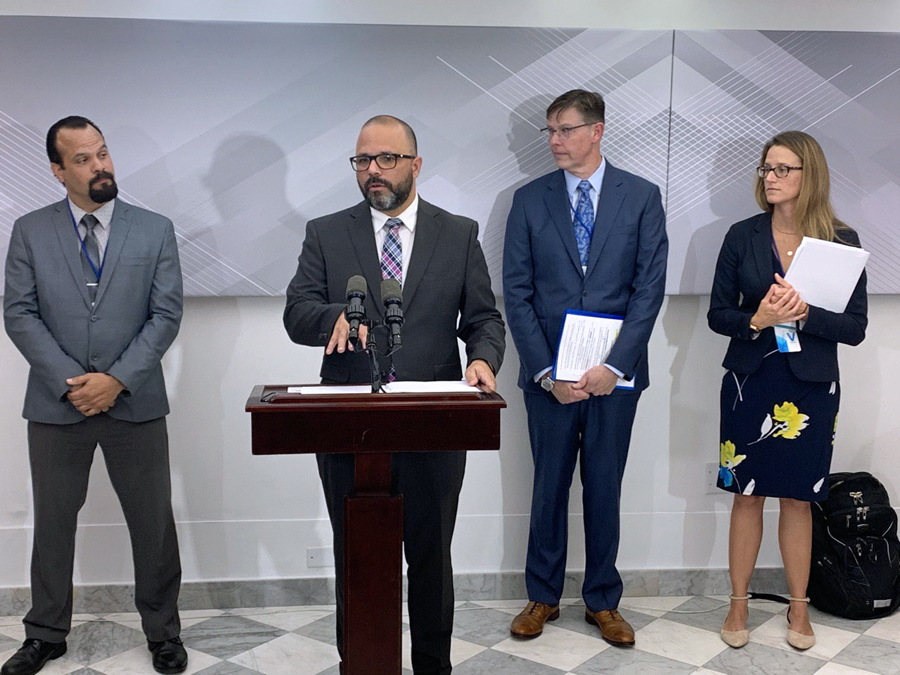Consumer spending shrinks by 9% from ’12-’17, as population also declined

Consumer spending in Puerto Rico contracted by nearly 9% from 2012 to 2017, when the island’s population also consistently declined, according to statistics released by the U.S. Department of Commerce’s Bureau of Economic Analysis.
Consumer spending — which contracted by an average of 1.8% annually during the period — measures the goods and services purchased by Puerto Rico’s households. The largest decreases in real consumer spending occurred in 2014 and 2017, with about 2.9% and 2.4% drops, respectively.
The data released Tuesday is the first under a collaborative agreement that the BEA reached with the government of Puerto Rico late last year, as this media outlet reported.
According to the data, in 2014, as wages dropped and consumer prices continued to increase, residents reduced their spending on both goods and services. The declines within goods were widespread; the largest decreases were for motor vehicles and “other” non-durable goods, which includes items such as medicine and clothing.
In 2017, Hurricanes Irma and María caused catastrophic damage that restricted residents’ access to many goods and services. The decreases in health care, housing and utilities, and “other” services (including education) were especially large, the BEA confirmed.
The BEA released prototype statistics for consumer spending, private fixed investment, and net exports of goods for Puerto Rico.
In the segment of private fixed investment (PFI) — which measures spending by private businesses, nonprofit institutions, and households on fixed assets in the Puerto Rico economy — the agency grouped the spending into three categories: structures, equipment, and intellectual property products.
“After decreasing in 2013, real PFI for Puerto Rico increased for four consecutive years. From 2013 to 2017, real spending grew 3.2%. The growth reflected increases in equipment spending and in spending on intellectual property products, including research and development,” the BEA’s data showed.
“These increases were partly offset by a decrease in spending on structures. The decline in structures reflected a large decrease in spending on residential structures that was partly offset by an increase in spending on nonresidential structures,” the agency added.
In 2017, spending on nonresidential structures increased, reflecting the rebuilding of commercial properties in the months following Hurricanes Irma and María.
“In contrast, spending on residential structures decreased, reflecting the continued drop in demand for homes consistent with the downward trend in the population, coupled with an even further decline after the hurricanes,” it concluded.
Regarding the third segment, the trade balance in goods — the difference between exports and imports — the BEA confirmed it was positive for all years from 2012 to 2017. The surplus ranged from $12.4 billion in 2012 to $28.6 billion in 2015.
The majority of exported goods, approximately 74% over this period, were pharmaceuticals and organic chemicals. Other significant exports were medical devices and equipment — which are embedded within consumer goods and within capital goods — and food and beverages.
Real exports of goods grew from 2012 to 2015; the highest growth was in 2014, which reflected growth of more than 50% in consumer goods excluding food, autos, and pharmaceuticals.
“The growth in this series was due to a large increase in exports of implanted or worn medical appliances. Real exports turned down in 2016 and then decreased 14.4% in 2017, reflecting the effects of the September hurricanes on the manufacturing sector,” the BEA stated.
Within imports of goods, pharmaceuticals and organic chemicals accounted for a large share; roughly 43% of the total. Petroleum products accounted for around 12% of imports, and food and beverages accounted for approximately 10%. Most petroleum and food for domestic consumption is imported.
Over the period from 2012 to 2017, the largest increase in real imports of goods was in 2016, and the largest decrease was in 2017. Real imports of goods grew 11.2% in 2016, reflecting a sharp increase in pharmaceuticals and organic chemicals.
In 2017, real imports of goods decreased 12.4%. The decrease was more than accounted for by a decline in pharmaceuticals and organic chemicals, which reflected both the effects of the hurricanes and a return to earlier levels of imports within this category, the BEA stated.
The estimates released are “a major step toward the goal of producing gross domestic product statistics for Puerto Rico that are consistent with international guidelines and that are directly comparable to data for other U.S. territories, states, the nation, and many other countries,” the BEA stated.
These statistics — which apply the most up-to-date source data and methodology available to BEA — can be used to understand Puerto Rico’s economic trends and support economic development strategies, particularly as the island continues its recovery from Hurricanes Irma and Maria.













